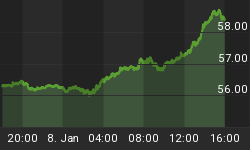Gold just isn't working as advertised as Washington flirts with disaster...
There's no denying that precious metals are falling even as the US debt-limit deadline draws so near, you can see that it's wearing a wig.
In fact, the mere hint of a short-term fix to avoid default next Thursday knocked gold prices below $1300 this week, with a further plunge as US trade opened on Friday.
For long-time investors, the irony looks so thick you could butter your toastwith it.
The US Dollar is the world's most important currency. The United States is also the world's largest debtor. So-called gold "bugs" who began buying gold in the early 2000s thought they saw what was coming. Then from 2007, Washington only added to its historic debt pile, backing the nation's entire finance sector with yet more taxpayer promises.
The endgame looked clear. And here it is, with less than one week to go. We now have the very real risk of an outright default, a failure by the UnitedStates government to pay its debts or bills as they come due.
US Treasury bonds underpin the world's financial system, setting interest rates and acting as collateral for pretty much the entire planet. The panic about to take hold should mean silver and gold are soaring. Yet here we sit, back below $1300 and $22 per ounce.
"You would think," offers John Waggoner in USA Today, "that the threat of a government default would send gold soaring. In default, after all, those who normally buy government debt would flee, driving down the value of US currency on foreign markets. But gold is doing little to aid your portfolio."
Gold just isn't working as advertised, in short, as US default draws near. "Honestly, it doesn't make sense," adds Dan Denbow - a guy who understands gold more than most, as manager of the $1bn USAA Precious Metals fund (USAGX). "The current situation is a bit perplexing."
But step back for a second. The world doesn't fit your model. So the worldmust be wrong?
Back in 2009, "the recent price surge looks suspiciously like a bubble," wrote Nouriel Roubini of gold. Because in the absence of severe inflation, or a catastrophic economic collapse, the NYU Stern School professor couldn't imagine gold rising. Yet it was. So gold must be wrong. Because of course, Roubini could only be right.
Now in late 2013, the opposite problem is confusing pundits worldwide. Gold is falling when it "should" be soaring. Maybe gravity's failed, the earth isflat, or somebody's rigging the market?
But check the other end of your telescope, and this US "default" isn't for real. It's a sham, a fraud, a scamola, and the financial markets know it. Political posturing is all that is happening. America faces default on a technicality, not a strike by its creditors. Even if no deal is done by October 17th, equity and bond investors know the US can borrow and spend all it wants at the moment. Only the arbitrary and very moveable debt ceiling is stopping it. And the US of course remains the world's biggest economy, and the source of its hottest must-have investments, regardless of value.
Take communications, for instance. The UK has Royal Mail, floated this week for the equivalent of $5.25 billion, and then jumping 38% on Friday's open. The monopoly postal service for the world's 7th largest economy, it's even been freed from the financial shackles of its pension promises to former employees. Not since Gordon Brown sold half the UK's gold reserves at the turn of the century has the British state offered investors quite such a bargain.
The US in contrast has Twitter, priced at twice as much by its IPO. Never mind the business models (Royal Mail made $700m operating profit in full-year 2012. Twitter lost $68m in the first-half of 2013). One of these stocks is a sell. But the faller will most likely be different short-term from long. Meantime, there's little surprise that gold and silver aren't jumping. Because the US default isn't happening, whether it does happen next Thursday or not.
Alongside US assets' return to froth, the sense of crisis peaking in 2011 continues to ebb. The real panic, the financial "end times" which Tea Party Republicans are winking at, is still pending. It isn't here today. And when it does show up, precious metals - most especially gold - will offer the antidote.
Physically rare and indestructible, gold is the very opposite of debt investments. Owning it puts you a million miles from being a creditor. If this US default were for real, gold would say so. For now, this is not the debt default goldowners were looking for.
Expect lots more confusion, however, if the buffoons go ahead and force a technical fail.
















